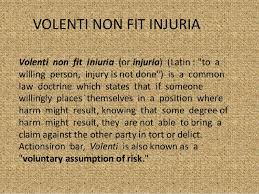Siddharth Dey
As I start with this new chapter on general defences, you might ask why we are studying general defences right now.
Unless we know all the torts, how can we study the defences? Well, you have got a point there. The reason why we are studying them now is because they are ‘General’ in nature and apply to almost all torts. We can study the section specific defences along with the chapters.
No matter what tort you take up for study, these defences are generally available to the tortfeasor.
Now, as the saying goes, exceptions are always there. There are some torts which have special defences and some which have no defences at all.
An instance of the former would be the defence of privilege in defamation while an instance of the latter are cases of absolute liability where no defences are available.
However, most of the defences that we are going to take up apply to a range of torts and we can apply them as and when they come if we have studied them in advance and this saves us of the burden of doing defences every time we study a tort. We shall take up the eight major general defences available in torts one by one.
General Defences
- Volenti Non Fit Injuria
- Plaintiff, the wrong-doer
- Vis Major
- Inevitable Accident
- Necessity
- Certain Mistakes
- Statutory Authority
- Right to Private Defence
LEGAL REASONING FOR CLAT
LEGAL REASONING FOR CLAT
VOLENTI NON FIT INJURIA
To translate that alien maxim for you in English, it means “to a willing person, no injury is done” or “no injury is done to a person who consents”.
It is a Latin maxim and a common law doctrine which means that if someone willingly places themselves in a position where harm might result, knowing that some degree of harm might result, they cannot then sue the other party in tort or delict if harm actually occurs. If a person has full knowledge of the harm associated with a certain act and he still consents to it , then he cannot complain if something happens. Therefore both knowledge and consent are necessary.
This maxim presupposes a tortuous act by the defendant. The maxim applies to intentional acts which would otherwise be tortuous. This principle is founded on the principles of good sense and justice. It is therefore also known as the defense of consent.
Harm suffered voluntarily does not constitute a legal injury and therefore is not actionable in torts. Volenti only applies to the risk which a reasonable person would consider them as having assumed by their actions; thus a boxer consents to being hit, and to the injuries that might be expected from being hit, but does not consent to (for example) his opponent striking him with an iron bar, or punching him outside the usual terms of boxing. Volenti is also known as a “voluntary assumption of risk.”
This principle underlying volenti is illustrated daily in common life. Had this principle not been there, then it would result in non offenders getting liable for acts that a reasonable person does, thus causing a lot of problems.
For example when a surgeon amputates a limb, he is protected because of this defense. A football player, a boxer , a fencer are all protected by this defence till they play reasonably. Suppose that a boxer is not protected then, there would be no game at all. If a bowler is not protected and he bowls and the ball hits the batsman , then he will be liable for every such ball that hits him and then there shall be no cricket and that would be so boring.
This defence has two main elements:
1. The claimant was fully aware of all the risks involved, including both the nature and the extent of the risk.
2. The claimant expressly (by his statement) or impliedly (by his actions) consented to waive all claims for damages.
There are two exceptions that are available to this rule, firstly that if a person has consented to the risks, it does not mean that he has consented to the risks and injury arising out of negligence. Secondly, in rescue cases the plaintiff cannot field this defence against the rescuer.
Knowledge of the risk is not sufficient: sciens non est. volens (“knowing is not volunteering”). Consent must be free and voluntary, i.e. not brought about by duress.
If the relationship between the claimant and defendant is such that there is doubt as to whether the consent was truly voluntary, such as the relationship between workers and employer, then it is unlikely that volenti will apply.
The person consenting to an act may not always be negligent: a bungee jumper may take the greatest possible care not to be injured, and if he is negligent then the organizer has the defence of volenti.
Now let us take a few examples.
A girl called Pagli trespassed on the railway and was hit by a train. The fencing around the railway was adequate, and Pagli voluntarily accepted the risk by breaking through it. Therefore the railway can avail the defence of volenti.
Annu was a student and he loved swimming. Once he broke into a closed swimming-pool and injured himself by diving into the shallow. He is responsible for damages caused to him because as a swimmer, he knew that he would be injured by diving into the shallow and he still went ahead with the act. One who himself invites danger cannot blame others when danger comes by.
Rohit loved swimming. One day he had gone to a picnic in a water park. There was a lake and he dived into the shallow lake, despite the presence of “No Swimming” signs. Here no one else can be held liable if he gets injured because the defence of volenti applies. The signs are held to be an adequate warning.
RESCUE CASES
When a person acts as a rescurer, he cannot be met by the defence of volenti in the following cases:
1. He was acting to rescue persons or property endangered by the defendant’s negligence;
2. He was acting under a compelling legal, social or moral duty; and
3. His conduct in all circumstances was reasonable and a natural consequence of the defendant’s negligence.
Let’s get this concept with the help of an example.
Daroga was a policeman. One day when he was on duty, he saw a horse carriage running on the road and he realized that it had to be stopped else it would cause a lot of damage. He tried to restrain the horse. He succeeded in halting it but was injured by the horse. Later, when he filed a suit for damages, the defendant said that he voluntarily took the risk and they tried to take the defence of volenti.
But he was able to recover damages because rescue cases are an exception. He had a legal and moral duty to protect life and property and as such was not held to have been acting as a volunteer or giving willing consent to the action – it was his contractual obligation as an employee and police officer and moral necessity as a human being to do so, and not a wish to volunteer, which caused him to act.
In such questions, see if it was necessary to perform the rescue act and figure out who put the person in the place of the rescuer. In this example say the policeman is not on duty then also, it does not affect the situation.
Let’s take another example. Kallu saw that a horse had bolted and was out of his master Ballu’s control. The horse ran into the garden of Kallu and Ballu followed it, trying to control it. When he could not do so, he shouted for help. At that time, there was no danger to life or property. Still, Kallu went and tried to control the horse. The horse did not appreciate this and he threw Kallu down. As a result he suffered a lot of injury’s and later brought a case. In this case, Ballu will not be liable because there was no danger to human life at that time and Kallu was also not under any compelling duty to act.






